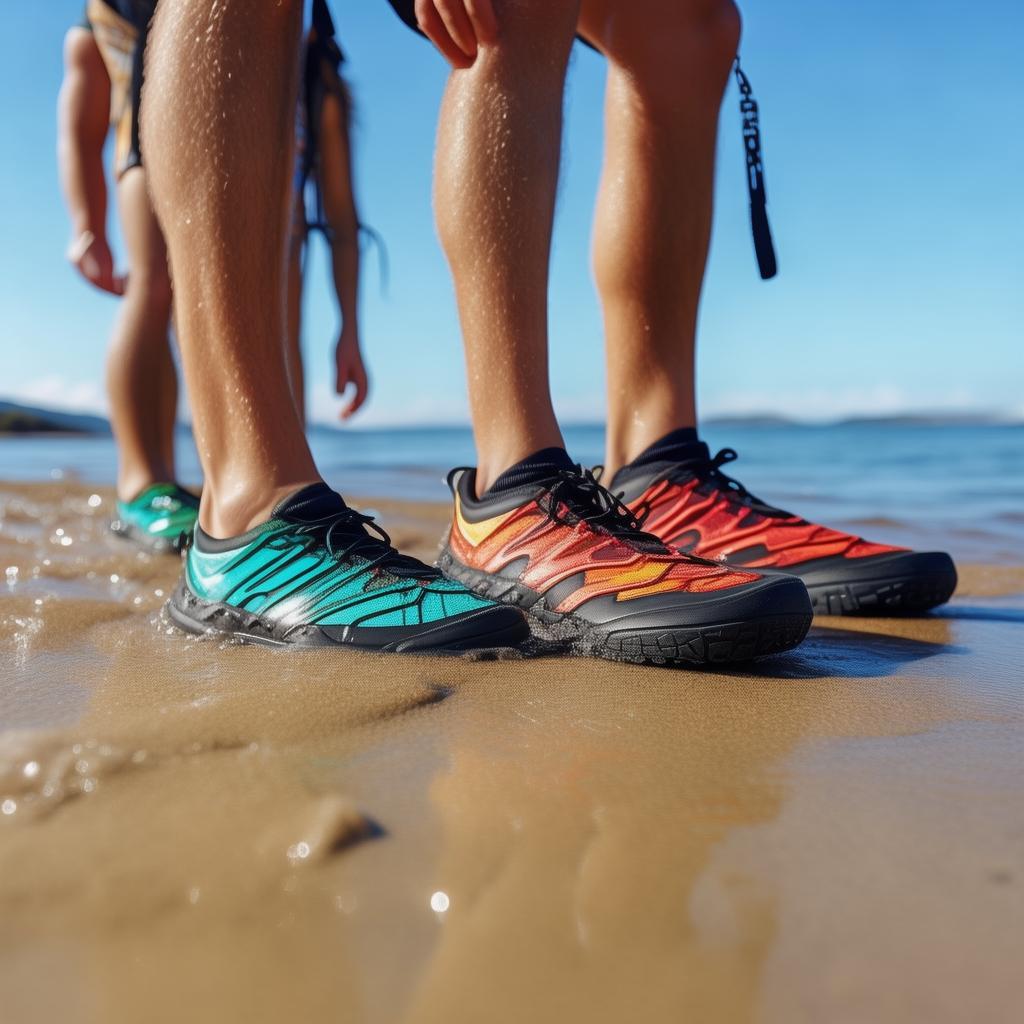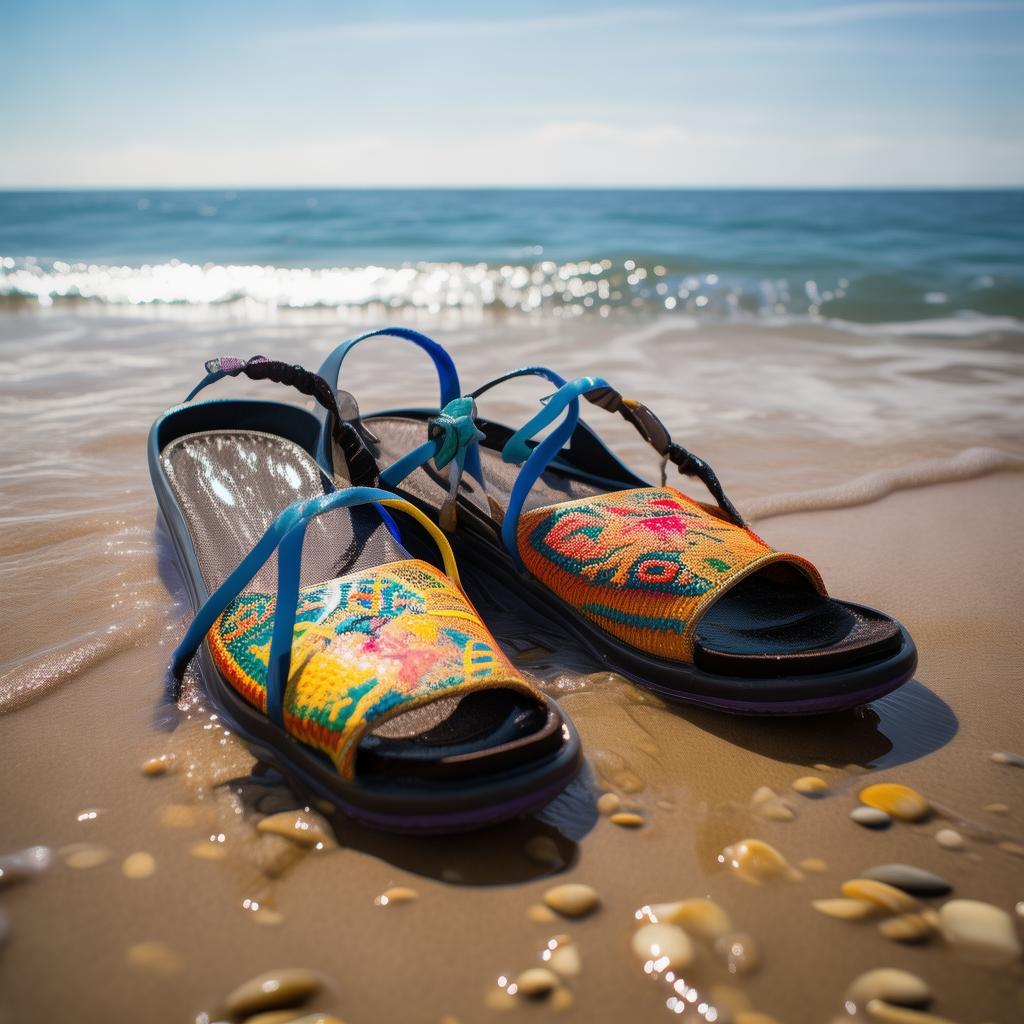Which footwear is comfortable on beach?
🌊 What's the Perfect Beach footwear?
PAS Formula:
- Problem: Finding comfortable footwear for the beach.
- Agitate: The discomfort of traditional shoes in sandy, salty environments.
- Solution: Discovering the ideal beach footwear.
Answer: The perfect beach footwear is designed to be lightweight, water-resistant, and provide ample cushioning without restricting movement.
Why is Comfort at the Beach So Important? Comfort at the beach is paramount because it enhances the overall experience. Whether you're lounging on the sand, wading in the water, or walking along the shoreline, the right footwear can make a significant difference in your enjoyment and comfort.
What Makes Beach Footwear Special? Beach footwear is special because it's tailored to the unique conditions of the beach. Here are some key features that make it stand out:
- Lightweight Materials: Beach shoes are typically made from lightweight materials like canvas, mesh, or synthetic fibers to reduce weight and allow for easy movement.
- Water-Resistant: They are designed to withstand exposure to water, making them suitable for both wet and dry beach activities.
- Cushioned Soles: To protect your feet from the hard sand and prevent blisters, beach footwear often features cushioned soles.
- Breathable Uppers: Breathable materials ensure your feet stay cool and dry, even during prolonged beach time.
- Non-Slip Soles: To prevent slipping on wet surfaces, beach shoes have non-slip soles that grip the sand and other surfaces.
Top 5 Beach Footwear Choices:
- Flip-Flops: The classic choice for beachgoers, flip-flops are versatile, easy to wear, and come in a variety of styles and colors.
- Beach Slides: Similar to flip-flops but with a slide-on design, beach slides offer a secure fit and are great for walking on uneven surfaces.
- Water Shoes: These are ideal for water activities like snorkeling or swimming, as they protect your feet from sharp objects and provide traction in the water.
- Beach Boots: For a more rugged look and extra protection, beach boots offer a sturdy design that can handle more rugged beach terrain.
- Sneakers: While not traditional beach footwear, water-resistant sneakers can be a good option for those who prefer a more supportive fit.
How to Choose the Right Beach Footwear?
- Consider the Activity: If you're planning on swimming or walking long distances, opt for shoes with good traction and cushioning.
- Fit is Key: Ensure your beach footwear fits well and doesn't restrict your movement.
- Material Matters: Choose materials that are durable, water-resistant, and breathable.
- Style Your Preference: Whether you prefer a minimalist look or something more statement-making, there's a beach shoe out there for you.

Frequently Asked Questions:
Q: Can I wear regular sandals to the beach? A: Yes, but they may not be as comfortable or durable as beach-specific footwear.
Q: Are water shoes suitable for walking on the beach? A: Yes, water shoes are designed to provide traction on both wet and dry surfaces.
Q: Do I need waterproof beach footwear? A: It depends on your activities. If you're just lounging, regular beach sandals may suffice. However, for water activities, waterproof shoes are recommended.
Q: Can beach footwear be worn in the water? A: Some beach footwear is designed to be worn in the water, but it's best to check the product description to ensure they are suitable for aquatic use.

Q: Are there any eco-friendly beach footwear options? A: Yes, there are eco-friendly beach footwear options made from sustainable materials like recycled plastic or natural fibers.
Conclusion: Choosing the right beach footwear can elevate your beach experience. Whether you're looking for something stylish or functional, there's a perfect pair out there for you. Remember to consider the activities you'll be doing, the materials, and the fit to ensure you have a comfortable and enjoyable time at the beach. 🌴👟
Frequently Asked Questions (Continued):
Q: How do I care for my beach footwear? A: To maintain the longevity of your beach footwear, rinse them with fresh water after each use to remove salt and sand. Allow them to air dry in a well-ventilated area. For more stubborn stains, a mild detergent and a soft brush can be used.
Q: Can beach footwear be worn for other activities besides the beach? A: Absolutely! Many beach footwear styles are versatile enough to be worn for casual outings, poolside lounging, or even as part of a summer wardrobe.
Q: What if I have wide feet or a high arch? A: Look for beach footwear with adjustable straps or a wide toe box to accommodate your foot shape. Some brands offer specialized footwear for those with wide feet or high arches.
Q: Are there any health benefits to wearing beach footwear? A: Yes, wearing beach footwear can help protect your feet from the sun's rays, reduce the risk of cuts and injuries from sharp objects in the sand, and provide support for your arches.
Q: Can I wear beach footwear in the winter? A: While beach footwear is not designed for cold weather, some styles can be worn in mild winter conditions, especially if you're looking for something to protect your feet from snow and ice.
Conclusion: In conclusion, the perfect beach footwear is a blend of comfort, functionality, and style. It's an essential accessory that can enhance your beach experience and even extend beyond the sandy shores. By considering the activities you'll be engaging in, your personal comfort needs, and the durability of the materials, you can find the ideal pair that will keep your feet happy and protected, no matter where your beach adventures take you. Happy beaching! 🌊👣